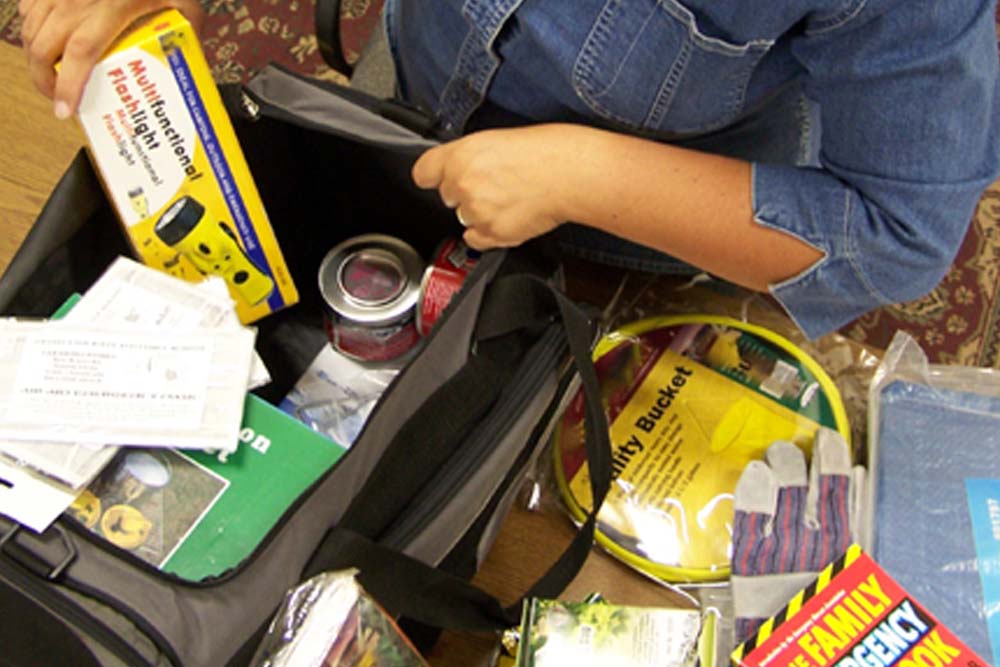Disaster Supply Kit: Food
THE POINT
DO THIS
- Try different food options for your disaster supply kit.
- Determine what works best for you and your family.
- Put that in your emergency kits.
- Rotate as necessary.
DOWNLOADS
Disaster Supply Kit Food
There are many options for food in disaster supply kits. For the most part, you just need to have a three day supply of ready-to-eat or simple preparation, nonperishable foods. Food preparation takes time, fuel, and cooking supplies, all of which will be in short supply. On the other hand, warm food can contribute to your mental and physical health. Find a balance between ready-to-eat and simple preparation that works for you. For the short-term, your main concern is high calorie foods to help maintain your energy and core body temperature. After a few days of exclusively high calorie foods, you'll need to have more nutritionally balanced foods, otherwise your body will start to get sick. Hopefully by this time, the urgent emergency will have passed and you will be able to use from your home food storage, or be somewhere with healthier food options. You may also want to throw in some hard candies in your disaster supply kit as a morale boosting comfort food or for possible first aid for diabetic shock or hypoglycemia.
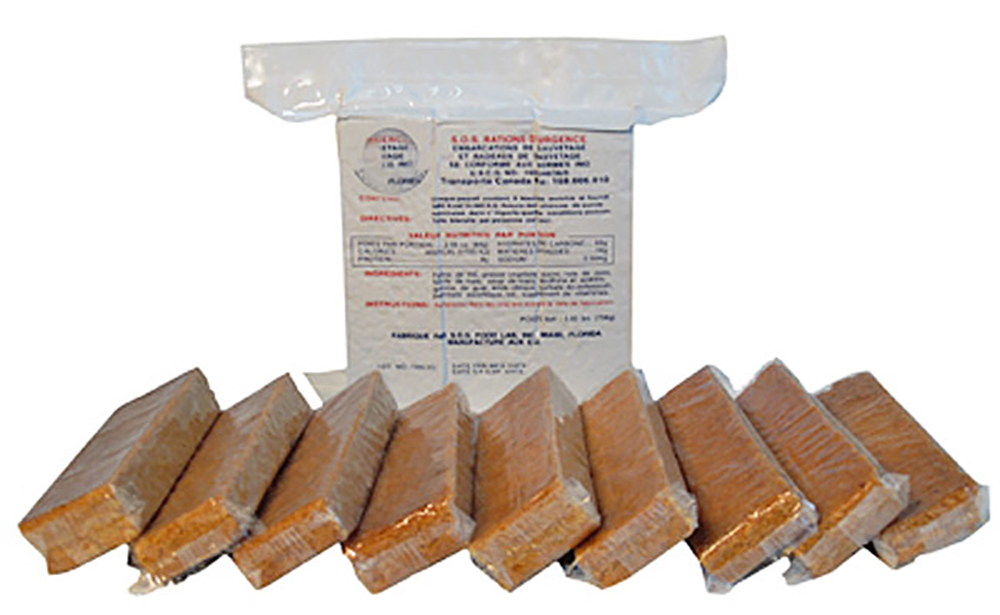
Emergency Ration Bars
Many people choose to put emergency ration bars into their kits. These have a five year shelf-life in their original packaging, are high calorie, and are ready-to-eat. They come in a variety of brands and a variety of flavors, most tasting like a bland sugar cookie. Many of them actually taste good. Try different ones to see which you like. If you choose to use emergency ration bars exclusively or for supplementing other food, be sure to check the ingredients for allergy and other nutrition information.
Freeze dried, pre-packaged food is light weight and tastes great. There are a variety of different foods that are freeze dried to meet your different tastes and nutritional needs. There are even some deserts. Freeze dried food packed in aluminum pouches has about a seven to ten year shelf-life depending on how it is stored. Many freeze dried foods need to be reconstituted with boiling water before eating, otherwise they can cause gastro-intestinal distress. This means you need to pack additional water in your kit and have a means of boiling it in a camping cup or metal canteen over a fire or pocket stove.
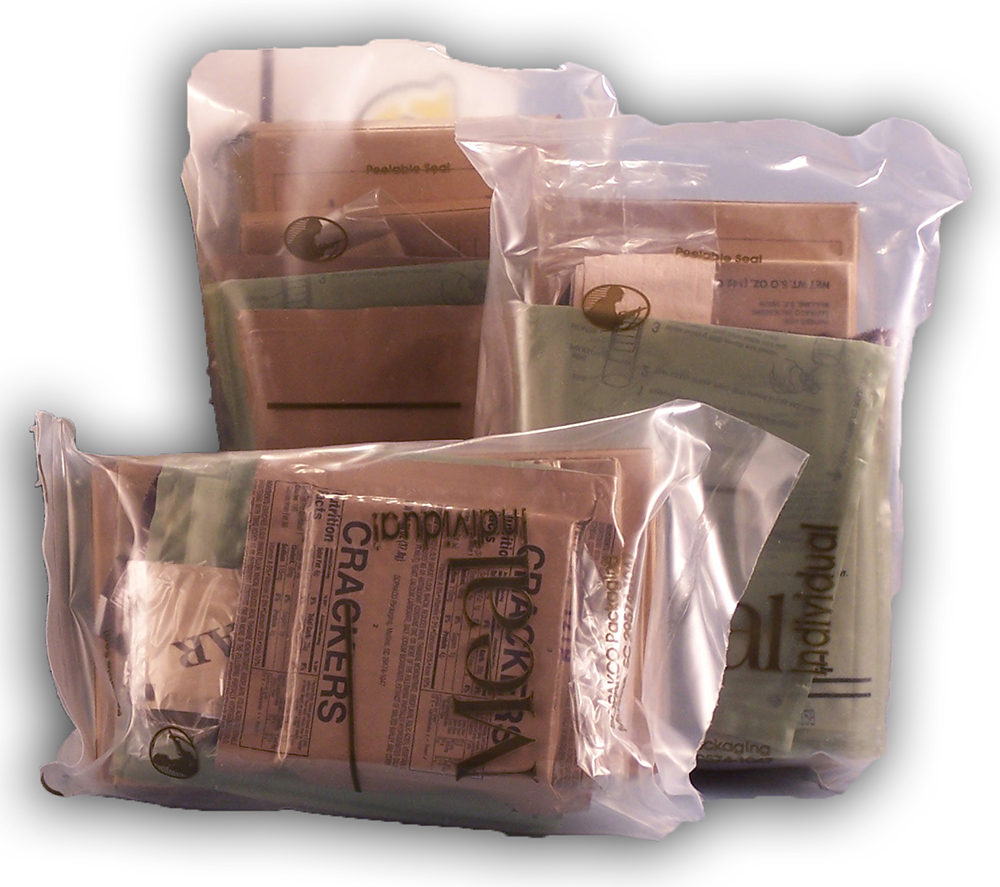
MRE Meals Ready to Eat
Meals-Ready-to-Eat (MREs) are the civilian version of the pre-packaged meals used by the military. They have a five to eight year shelf life and can be eaten cold, right from the package. No reconstitution is required. MREs do taste much better when warm, and can easy be warmed by placing the unopened package in boiling water. Many MRE packages come with a flameless heater that chemically reacts with a small amount of water producing heat for about 15 minutes, enough heat and time to warm one MRE meal and side. These are high calorie meals ideal for stressful situations, but should not be the sole source of food for any longer than three to five days. One full MRE packet is enough calories to last an entire day under short-term emergency conditions.
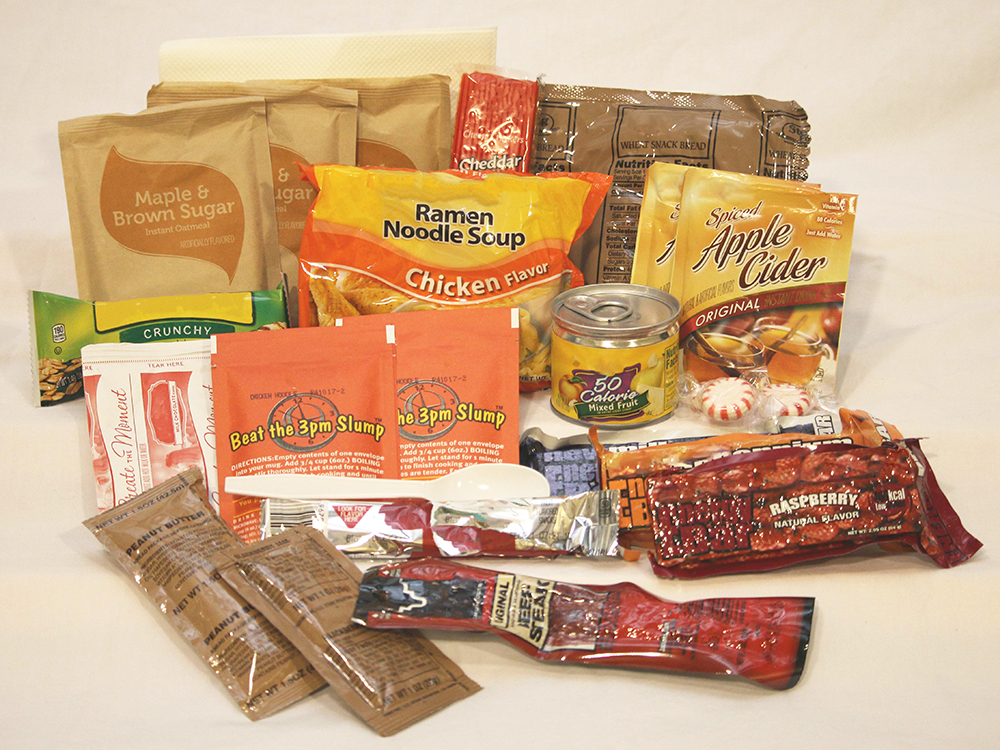
Build your own kit meals
If you have specific nutritional needs or tastes, you may want to build your own disaster supply kit meals from items at the grocery store. This may be an easier option for children who are picky eaters. Include favorite items that have a long shelf-life. Also know that most shelf-stable items from the grocery store still only have a six month to one year shelf-life. Be sure to only include items that are ready-to-eat or simple preparation. Include additional water, cooking, and eating supplies as necessary.
Consider items like instant soup packets, ramen, granola and energy bars, oatmeal packets, hot cocoa and cider packets, fruit cups, dried fruits and nuts, jerky, trail mix, peanut butter and jelly packets, etc. Another good option for children are the grab 'n go squeeze food pouches that often are used with baby food or apple sauce. These are low mess and often have flavors and foods that kids love. Let them try a few flavors before you put them in their kits to be sure they like them and will eat them.
Don't forget to include your multi-vitamins and medications. How about some gum or breath mints?
Be sure to make changes for those in your family or household that have have specific dietary needs or restrictions. Think about food allergies, food intolerances, and also physical abilities. Young children on baby food may need grab 'n go squeeze baby food pouches rather than bottled baby food. Babies may also need formula and bottles in their kits. Try the bottles with disposable bag inserts to minimize space and make clean-up easier when you may not be in a place where proper bottle cleaning is possible. It is a good idea to include powdered formula and bottles even for nursing infants who may need additional nutrition. Stressful situations have been known to affect the amount of nutrition that mothers can provide.
It's also a good idea to have a written or printed copy of your meal plan so you only eat the items for that meal. It will help you save your kit food supply to last at least three days.
Food Storage and Nutrition
Click Here
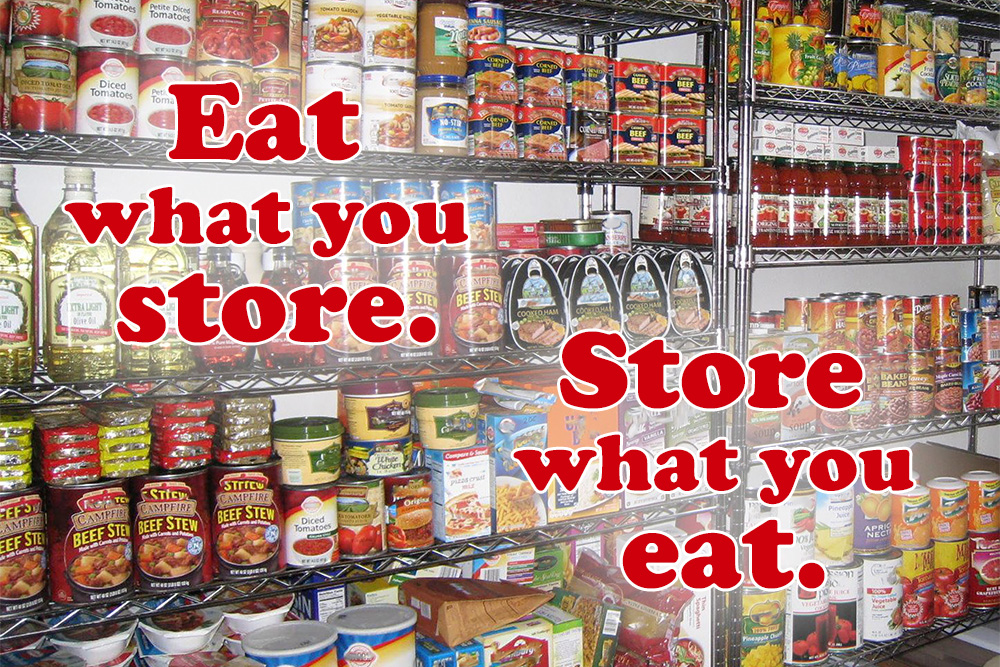
Get a Kit: Family
Click Here
